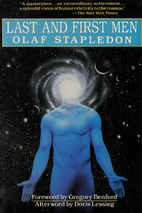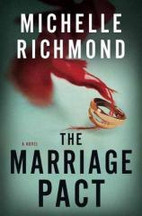My concluding entry in a series of books touched on by the Wells works I’ve covered. This book is mentioned in Wells’ Star-Begotten.
I’m pretty sure I didn’t do the novel justice.
Another perspectives are provided by From Couch to Moon.
Raw Feed (1996): Last and First Men: A Story of the Near and Far Future, Olaf Stapledon, 1930.
Everything I’ve ever heard about Stapledon is correct judging on the basis of this novel. He was a totally unique voice in sf when this novel was published, and he is still totally unique. His epic style in which millions of years can routinely pass in the space of a paragraph often has a religious flavor to it harkening back to psalms (his first book of poetry was called Latter-Day Psalms).
The Encyclopedia of Science Fiction (in a blurb at the front of this book) claims Stapledon is the second most influential writer in sf next to Wells. I think that claim is arguable. Certainly Wells introduced, or gave a big boost, to such perennial sf motifs as time travel, alien invasion, surgery on/genetic manipulation of animals, the far future story, the physical evolution of man. Stapledon creates few new ideas, but his epic style and his spiritual concerns are different than Wells’. [Certainly, I would put Stapedon in the top five most influential science fiction writers.]
Wells, in The Time Machine and, to a lesser extent, “A Story of the Days to Come“, shows us humans evolved physically and socially. However, Wells does not dwell at length on the various stages of evolution. He contents himself with showing some final end stage like the Morlocks and Eloi and giving a brief explanation as to how they evolve.
Stapledon insist upon showing 18 species of men in greater and lesser detail and often gives explanations for their evolved traits. Stapledon places a great deal of emphasis on physiological causes, be it genetic or hormonal, of behavior. I suspect this seems so noticeable because, in the years since this novel was published, the explanations for human behavior relied heavily on culture and society. Only now, with evolutionary psychology [and findings of genetic influence on behavior and abilities], is the pendulum swinging back.
Stapledon seems to have been a much more spiritual minded man than Wells, and this is definitely reflected in their writings. Wells’ main concern is how to build a society that would ameliorate or eliminate the social problems he saw. That seems to have been the limit of his vision for man. Stapledon seeks to find meaning for men in a godless universe. He postulates (in a sort of Boethian way) that human personalities exist eternally and can be accessed by those from the future, that man must view his life and tragedies as part of the great story of the universe, that he is a theme in the music of life, or, at least, a brief theme in the universe.
The novel’s final sentence, as 18th man prepares for the death of man in the nova of the sun, is a classic as man meets his end with composure: “For we shall make after all a fair conclusion to this brief music that is man.” In effect, man is to merge his identity into the universe. Or, at least, so the Neputanian 18th men want as an end result of their studies.
Stapledon’s influence is all over sf. The 18th men scheme for spreading “an artificial human seed” to avoid human extinction in the nova is a probable inspiration for the “Martian” scheme of reproduction in the face of their extinction in Star-Begotten. Man’s composure in the face of annihilation finds a similar tone in Greg Bear’s The Forge of God. Arthur C. Clarke has listed Stapledon as his main influence. The influence seems particularly evident in his future The City and the Stars (also known by the Stapledonian title Against the Fall of Night). George Zebrowski’s fiction shows heavy influence, freely acknowledged, by Stapledon. Zebrowski exploits a curious scientific and technological conservatism by Stapledon in the latter’s use of space travel. Zebrowski brings a Stapledonian vision to a wider physical universe.
Like Wells – and as a devout Marxist – Stapledon is concerned with his own ideas of social justice. [I was not referring to the current concept of “social justice” which, far from being blind justice, wants to look at bank accounts, race, and sex before drawing a conclusion.] The first fourth of the book is a relatively near future tale of a race corrupted by capitalism and America’s influence. (However, Stapledon was perceptive in showing a world increasingly bound together economically and becoming more dominated by American culture.)
As Gregory Benford notes in his introduction, the opening fourth of the book is fairly dated. (Benford is another author influenced by Stapledon, particularly in the far-reaching vistas of his Galactic Center series.) Stapledon – assuming the five timelines at the end of the novel are his – increases the timescale logarithmically throughout the novel. (James Gunn once said sf was race fiction about the human race. This novel is as pure expression of that idea as can be found. Only very briefly do we see individual people.) Poul Anderson consciously used the same technique in his Tau Zero.
This novel is so rich, I can only give a brief list of the story elements I liked: the aeronautically obsessed civilization at the end of 1st Man and the scientists who suppress a superweapon. (The notion of scientists seeking to rule the world via a new, closely possessed technology was also explored in Vernor Vinge’s The Peace War. Both authors come to the conclusion that even relatively cosmopolitan, international-minded scientists with good intentions can’t be trusted with such power.) There is the survival of the remnants of 1st Man in the Arctic; the invasion of telepathic Martians who at first don’t recognize Man’s sentience (Stapledon goes to great lengths to rationalize Martian telepathy) and exist as a group-mind; the talented, religious, sexually-colored, sadistic manipulation of the living flesh of animals – the so-called “vital art” — by the 3rd Man and his creation of the Great Brains of 4th Man and the latter’s enslavement of the former (as well as killing most animal species off); the creation of 5th Man by 4th Man.
The deliberate engineering of humanity is a constant theme in the book as is the notion incomplete human species somehow missing some element of sexuality, intellect, empathy, or religiosity – only the 18th Man is complete; in effect, Stapledon views the human evolution of the book as moving toward an ideal human form – a notion of evolution criticized by some evolutionists; the mental time-traveling of the 5th men and their obsessions and unfortunate involvement with tragedies of the past (detachment from the tragedy of life is a trait admired by Stapledon); the terraforming of Venus and the extermination of the native sentient Venusians (a replay of the Earth-Mars war with Man as the Martians); the Flying Men of Venus and the degeneration of man; and the rebirth of ideal 18th Man (the narrator is one talking, via mental time travel, through a 20th century man) who faces annihilation. I’m not sure how original many of the details of Stapledon’s story are but his tone and epic sweep influenced sf greatly. This is a great work of sf – presumably only matched in flavor by other Stapledon works.
In an afterword, Doris Lessing has a brief essay on Stapledon’s influence on literature and Lessing’s reaction to the novel.
More reviews of fantastic fiction are indexed by title and author/editor.
Advertisements Share this:




